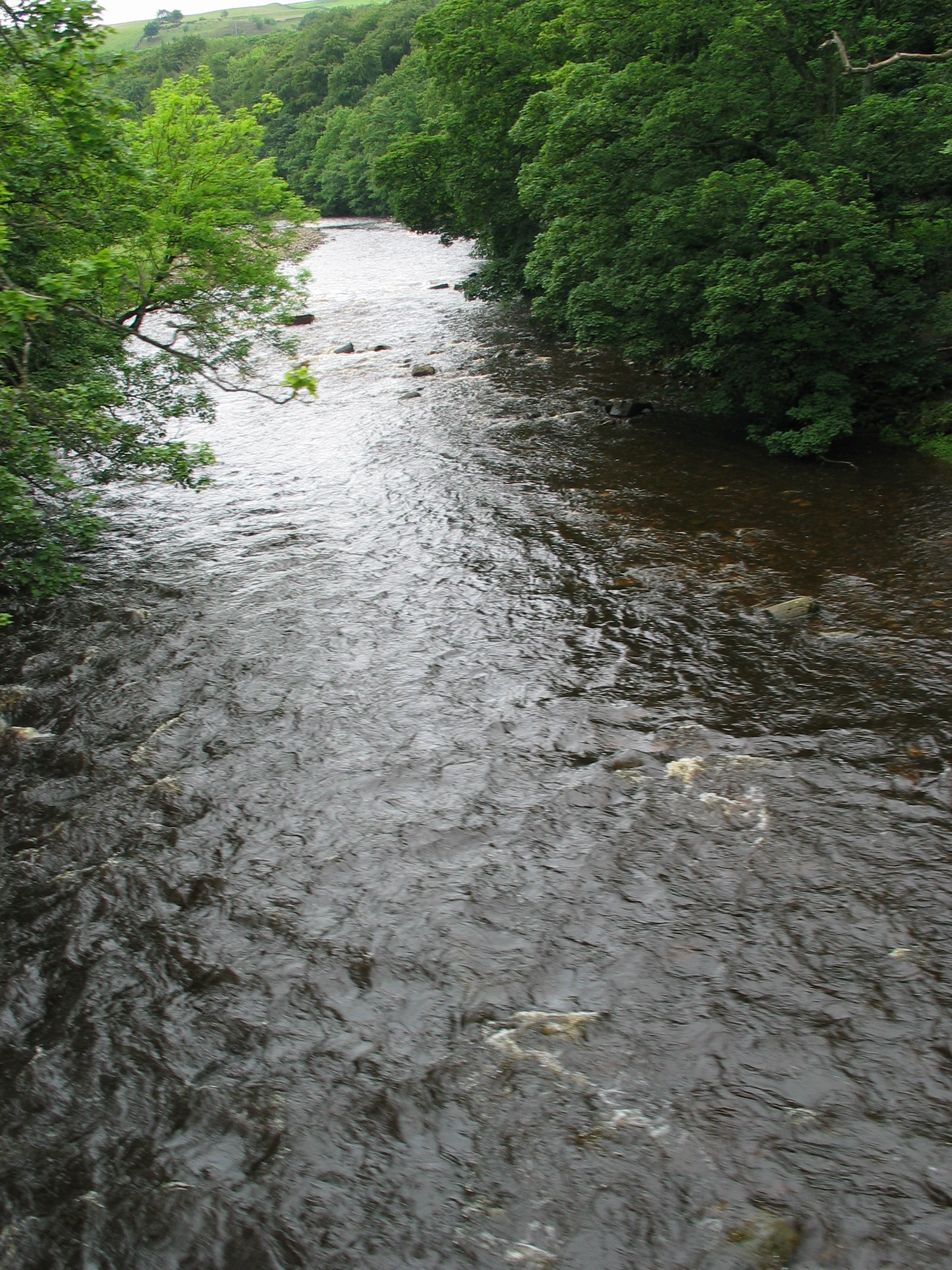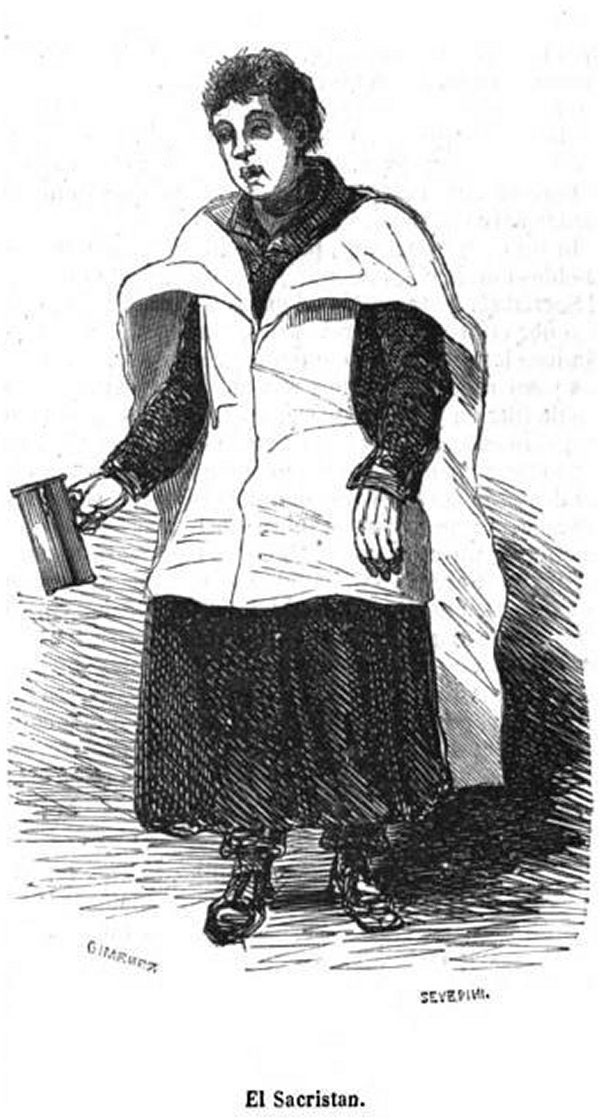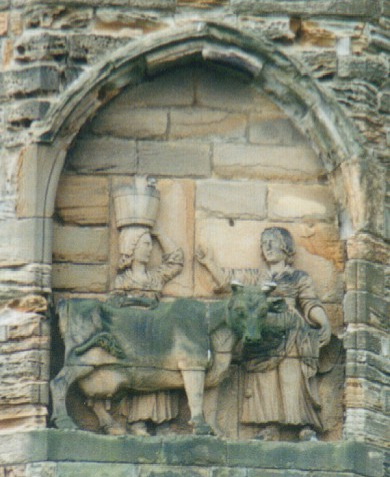|
Finchale Priory
Finchale Priory ( ), sometimes referred to as Finchale Abbey, was a 13th-century Benedictine priory. The remains are sited by the River Wear, four miles from Durham, England. It is a Grade I listed building. Early history Godric was born about 1070. After years of travel as a merchant, sailor, and pilgrim, he felt called to change his life. Initially he lived in caves and woods before settling with an elderly hermit at Wolsingham in upper Weardale. Around 1112 Godric was living in Durham, serving as doorkeeper at the hospital church of St Giles. He persuaded the Bishop of Durham, Ranulf Flambard, who had befriended him, to grant him a place to live as a hermit at Finchale, by the River Wear. There Godric created a hermitage dedicated to St John the Baptist. Godric's biographers recorded that he lived an ascetic life on this site for 50 years, living and sleeping outside and rejecting expensive cloth and plentiful food. Godric's life was first recorded by Reginald of Durha ... [...More Info...] [...Related Items...] OR: [Wikipedia] [Google] [Baidu] |
River Wear
The River Wear (, ) in Northern England rises in the Pennines and flows eastwards, mostly through County Durham, to the North Sea in the City of Sunderland. At long, it is one of the region's longest rivers. The Wear wends in a steep valley through the cathedral city of Durham and gives its name to Weardale in its upper reach and Wearside by its mouth. Etymology The origin behind the hydronym ''Wear'' is uncertain but is generally understood to be Celtic. The ''River Vedra'' on the Roman Map of Britain may very well be the River Wear. The name may be derived from Brittonic ''*wejr'' (<''*wẹ:drā''), which meant "a bend" (cf. Welsh ''-gwair-''). An alternative but very problematic etymology might involve ''*wẹ:d-r-'', from a lengthened form of the |
St John The Baptist
John the Baptist ( – ) was a Jewish preacher active in the area of the Jordan River in the early first century AD. He is also known as Saint John the Forerunner in Eastern Orthodoxy and Oriental Orthodoxy, John the Immerser in some Baptist Christian traditions, and as the prophet Yahya ibn Zakariya in Islam. He is sometimes referred to as John the Baptiser. John is mentioned by the Roman Jewish historian Josephus, and he is revered as a major religious figure in Christianity, Islam, the Baháʼí Faith, the Druze faith, and Mandaeism; in the last of these he is considered to be the final and most vital prophet. He is considered to be a prophet of God by all of the aforementioned faiths, and is honoured as a saint in many Christian denominations. According to the New Testament, John anticipated a messianic figure greater than himself; in the Gospels, he is portrayed as the precursor or forerunner of Jesus. According to the Gospel of Matthew, Jesus himself identifies John a ... [...More Info...] [...Related Items...] OR: [Wikipedia] [Google] [Baidu] |
Grade I Listed Buildings In County Durham
There are more than 9000 Grade I listed buildings in England. This page is a list of these buildings in the county of Durham, sub-divided by unitary authority A unitary authority is a type of local government, local authority in New Zealand and the United Kingdom. Unitary authorities are responsible for all local government functions within its area or performing additional functions that elsewhere are .... County Durham Darlington Hartlepool Stockton-on-Tees Notes See also * Grade II* listed buildings in County Durham References National Heritage List for EnglandKeys To The PastDurham/Northumbria councils site External links {{DEFAULTSORT:List Of Grade I Listed Buildings In Durham Durham Grade I Lists of Grade I listed buildings in North Yorkshire ... [...More Info...] [...Related Items...] OR: [Wikipedia] [Google] [Baidu] |
English Heritage Sites In County Durham
English usually refers to: * English language * English people English may also refer to: Culture, language and peoples * ''English'', an adjective for something of, from, or related to England * ''English'', an Amish term for non-Amish, regardless of ethnicity * English studies, the study of English language and literature Media * ''English'' (2013 film), a Malayalam-language film * ''English'' (novel), a Chinese book by Wang Gang ** ''English'' (2018 film), a Chinese adaptation * ''The English'' (TV series), a 2022 Western-genre miniseries * ''English'' (play), a 2022 play by Sanaz Toossi People and fictional characters * English (surname), a list of people and fictional characters * English Fisher (1928–2011), American boxing coach * English Gardner (born 1992), American track and field sprinter * English McConnell (1882–1928), Irish footballer * Aiden English, a ring name of Matthew Rehwoldt (born 1987), American former professional wrestler ... [...More Info...] [...Related Items...] OR: [Wikipedia] [Google] [Baidu] |
Bishop Of Carlisle
The Bishop of Carlisle is the Ordinary (officer), Ordinary of the Church of England Diocese of Carlisle in the Province of York. The diocese covers the county of Cumbria except for Alston Moor and the former Sedbergh Rural District. The Episcopal see, see is in the city of Carlisle where the seat is located at the Carlisle Cathedral, Cathedral Church of the Holy and Undivided Trinity which was a collegiate church until elevated to cathedral status in 1133. The diocese was created in 1133 by Henry I of England, Henry I out of part of the Diocese of Durham. It was extended in 1856 taking over part of the Diocese of Chester. The residence of the bishop was Rose Castle, Dalston, Cumbria, Dalston, until 2009; the current bishop is the first to reside in the new Bishop's House, Keswick, Cumbria, Keswick. The see is vacant as of 31 August 2023, following the retirement of 67th bishop James Newcome. On 9 May 2025, it was announced that Rob Saner-Haigh, Bishop of Penrith, is to become t ... [...More Info...] [...Related Items...] OR: [Wikipedia] [Google] [Baidu] |
Richard Bell (bishop)
Richard Bell (died 1496) was a Bishop of Carlisle. He was selected 11 February 1478, and consecrated 26 April 1478. He resigned the see on 4 September 1495, and died in 1496.Fryde, et al. ''Handbook of British Chronology'' p. 236 He had previously served as Warden of Durham College, Oxford Durham College, also known as Durham Hall until 1381, was a college of the University of Oxford, founded by the monks of Durham Priory in the late 13th century and endowed by Bishop Thomas Hatfield in 1381. The college was closed in 1545 fo ... from 1450-53 and Prior of Finchale from 1457 to 1464.Raines ''Charters of Endowment'' Citations References * * Bishops of Carlisle 15th-century English Roman Catholic bishops 1496 deaths Durham College, Oxford Year of birth unknown {{England-bishop-stub ... [...More Info...] [...Related Items...] OR: [Wikipedia] [Google] [Baidu] |
Uhtred (Benedictine Theologian)
Uthred or Uhtred of Boldon (also spelled Owtred; – 28 January 1397) was an English Benedictine monk, theologian and writer, born at Boldon, North Durham; he died at Finchale Abbey. Life Uhtred joined the Benedictine community of Durham Abbey about 1332 and was sent to London in 1337. Three years later he entered Durham College, Oxford, a house which the Durham Benedictines had established at Oxford for those of their members who pursued their studies at the University of Oxford. He was graduated there as licentiate in 1352 and as doctor in 1357. During the succeeding ten years, and even previously, he took part in numerous disputations at Oxford University, many of which were directed against members of the mendicant orders. It is on this account that John Bale wrongly designates him as a supporter of John Wycliffe. In 1367 Uhtred became prior of Finchale Abbey, a position to which he was appointed three other times, in 1379, 1386, and 1392. In 1368 and in 1381 he serv ... [...More Info...] [...Related Items...] OR: [Wikipedia] [Google] [Baidu] |
Hospitium
Hospitium (; , ''xenia'', προξενία) is the ancient Greco-Roman concept of hospitality as a divine right of the guest and a divine duty of the host. Similar or broadly equivalent customs were and are also known in other cultures, though not always by that name. Among the Greeks and Romans, hospitium was of a twofold character: private and public. Private In Homeric times, all strangers, without exception, were regarded as being under the protection of Zeus Xenios, the god of strangers and suppliants, and had the ''right to hospitality''. (It is doubtful whether, as is commonly assumed, they were considered as ipso facto enemies; they were rather guests.) Immediately on his arrival, the stranger was clothed and entertained, and no inquiry was made as to his name or antecedents until the duties of hospitality had been fulfilled. When the guest parted from his host he was often presented with gifts (ξένια), and sometimes a die (ἀστράγαλος) was broken betwee ... [...More Info...] [...Related Items...] OR: [Wikipedia] [Google] [Baidu] |
Sacrist
A sacristan is an officer charged with care of the sacristy, the church, and their contents. In ancient times, many duties of the sacrist were performed by the doorkeepers ( ostiarii), and later by the treasurers and mansionarii. The Decretals of Gregory IX speak of the sacristan as if he had an honourable office attached to a certain benefice, and say that his duty was to care for the sacred vessels, vestments, lights, etc. Nowadays the sacristan is elected or appointed. The '' Cæremoniale Episcoporum'' prescribed that in cathedral and collegiate churches the sacristan should be a priest, and describes his duties in regard to the sacristy, the Blessed Eucharist, the baptismal font, the holy oils, the sacred relics, the decoration of the church for the different seasons and feasts, the preparation of what is necessary for the various ceremonies, the pregustation in pontifical Mass, the ringing of the church bells, the preservation of order in the church, and the distribut ... [...More Info...] [...Related Items...] OR: [Wikipedia] [Google] [Baidu] |
Durham Cathedral
Durham Cathedral, formally the , is a Church of England cathedral in the city of Durham, England. The cathedral is the seat of the bishop of Durham and is the Mother Church#Cathedral, mother church of the diocese of Durham. It also contains the shrines of the Anglo-Saxons, Anglo-Saxon saints Cuthbert and Bede. There are daily Church of England services at the cathedral, and it received 727,367 visitors in 2019. It is a grade I listed building and forms part of the Durham Castle and Cathedral World Heritage Site. The cathedral is the successor to the Anglo-Saxon Lindisfarne Priory, which was established but abandoned in 875 in the face of Viking Age, Viking raids. The monks settled at Chester-le-Street from 882 until 995, when they moved to Durham. The cathedral remained a monastery until it was Dissolution of the monasteries, dissolved in 1541, since when it has been governed by a Dean of Durham, dean and Chapter (religion), chapter. The cathedral precinct formed part of Durham ... [...More Info...] [...Related Items...] OR: [Wikipedia] [Google] [Baidu] |
Sedilia
In church architecture, sedilia (plural of Latin ''sedīle'', "seat") are seats, typically made of stone, located on the liturgical south side of the altar—often within the chancel—intended for use by the officiating priest, deacon, and sub-deacon during Mass Mass is an Intrinsic and extrinsic properties, intrinsic property of a physical body, body. It was traditionally believed to be related to the physical quantity, quantity of matter in a body, until the discovery of the atom and particle physi .... These seats are frequently recessed into the church wall. History Sedilia, usually a set of seats built in the south wall of a church chancel for the officiating clergy, owns a long history and regional features among British ecclesiastical architecture. Its development can be traced back to the early 12th century, and experienced a renaissance in the 19th century, whose peak was during the Gothic period in England. Origins and early examples The most primary ... [...More Info...] [...Related Items...] OR: [Wikipedia] [Google] [Baidu] |




